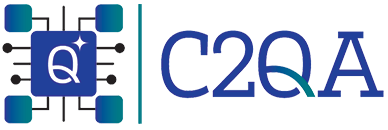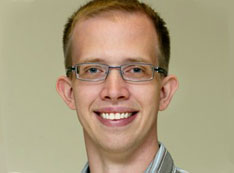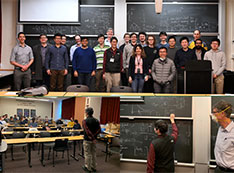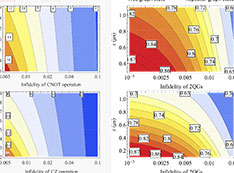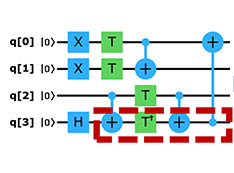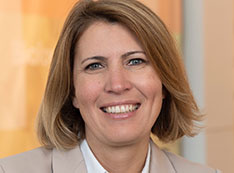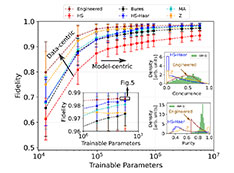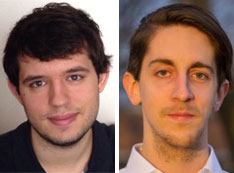Latest Publications
July 12, 2022
Minimizing state preparation times in pulse-level variational molecular simulations.
Asthana, C. Liu, O. Meitei, S. Economou, E. Barnes, N. Mayhall.
Quantum simulation on NISQ devices is severely limited by short coherence times. A variational pulse-shaping algorithm known as ctrl-VQE was recently proposed to address this issue by eliminating the need for parameterized quantum circuits, which lead to long state preparation times. Here, we find the shortest possible pulses for ctrl-VQE to prepare target molecular wavefunctions for a given device Hamiltonian describing coupled transmon qubits. We find that the time-optimal pulses that do this have a bang-bang form consistent with Pontryagin's maximum principle. We further investigate how the minimal state preparation time is impacted by truncating the transmons to two versus more levels. We find that leakage outside the computational subspace (something that is usually considered problematic) speeds up the state preparation, further reducing device coherence-time demands. This speedup is due to an enlarged solution space of target wavefunctions and to the appearance of additional channels connecting initial and target states. Read more
Datacentric machine learning in quantum information science.
Lohani, J. Lukens, R. Glasser, T. Searles, B. Kirby
We propose a series of data-centric heuristics for improving the performance of machine learning systems when applied to problems in quantum information science. Read more and see the “Member Spotlight” section in newsletter.
A hybrid system for learning classical data in quantum states.
S. Stein, B. Baheri, R. Tischio, Y. Chen, Y. Mao, Q. Guan, A. Li, B. Fang.
Deep neural network powered artificial intelligence has rapidly changed our daily life with various applications. However, as one of the essential steps of deep neural networks, training a heavily weighted network requires a tremendous amount of computing resources. Especially in the post-Moore's Law era, the limit of semiconductor fabrication technology has restricted the development of learning algorithms to cope with the increasing high-intensity training data. Meanwhile, quantum computing has demonstrated its significant potential in terms of speeding up the traditionally compute-intensive workloads. For example, Google illustrated quantum supremacy by completing a sampling calculation task in 200 seconds, which is otherwise impracticable on the world's largest supercomputers. To this end, quantum-based learning has become an area of interest, with the potential of a quantum speedup. In this paper, we propose GenQu, a hybrid and general-purpose quantum framework for learning classical data through quantum states. We evaluate GenQu with real datasets and conduct experiments on both simulations and real quantum computer IBM-Q. Our evaluation demonstrates that, compared with classical solutions, the proposed models running on GenQu framework achieve similar accuracy with a much smaller number of qubits, while significantly reducing the parameter size by up to 95.86% and converging speedup by 33.33% faster. Read more
Epitaxial ScxAI1-xN on GaN exhibits attractive high-K dielectric properties.
Casamento, H. Lee, T. Maeda, V. Gund, K. Nomoto, L. van Deurzen, W. Turner, P. Fay, S. Mu, C. Van de Walle, A. Lal, H. Xing, D. Jena.
Epitaxial ScxAI1-xN thin films of ~100 nm thickness grown on metal polar GaN substrates are found to exhibit significantly enhanced relative dielectric permittivity (Er) values relative to AlN. er values of ~17–21 for Sc mole fractions of 17%–25% (x = 0.17–0.25) measured electrically by capacitance–voltage measurements indicate that ScxAI1-xN has the largest relative dielectric permittivity of any existing nitride material. Since epitaxial ScxAI1-xN layers deposited on GaN also exhibit large polarization discontinuity, the heterojunction can exploit the in situ high-K dielectric property to extend transistor operation for power electronics and high-speed microwave applications. Read more
Signatures of moat regimes in heavy-ion collisions.
Pisarski, F. Rennecke.
Heavy-ion collisions at small beam energies have the potential to reveal the rich phase structure of QCD at low temperature and nonzero density. In this case spatially modulated regimes with a “moat” spectrum can arise, where the minimum of the energy is over a sphere at nonzero momentum. We show that if the matter created in heavy-ion collisions freezes out in such a regime, particle numbers and their correlations peak at nonzero, instead of zero, momentum. This effect is much more dramatic for multiparticle correlations than for single-particle spectra. Our results can serve as a first guideline for a systematic search of spatially modulated phases in heavy-ion collisions. Read more
2022-20712 | INT/EXT | Newsroom
